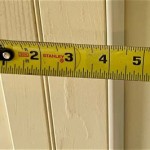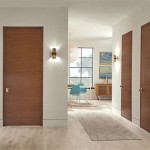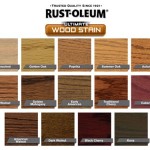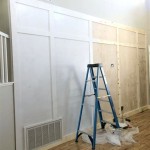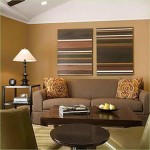```html
How To Brighten Up a Log Cabin Interior
Log cabins, celebrated for their rustic charm and cozy ambiance, often present a unique challenge: achieving sufficient brightness within their interiors. The inherent nature of log construction, with its thick walls and relatively small windows, can lead to spaces that feel dark and somewhat enclosed. However, with strategic planning and execution, it is entirely possible to transform a dimly lit log cabin into a bright and welcoming haven. This article explores various approaches to maximize natural and artificial light, incorporate lighter color palettes, and leverage reflective surfaces to enhance the overall brightness of a log cabin interior.
Maximize Natural Light
The most effective way to brighten any interior is to optimize the utilization of natural light. In a log cabin, this involves a careful assessment of existing windows and a consideration of potential modifications or additions.
Window Placement and Size: Start by evaluating the placement and size of the current windows. Windows that face south generally receive the most direct sunlight throughout the day. If feasible, consider adding or expanding windows on south-facing walls. Even a modest increase in window size can significantly impact the amount of natural light entering the space. Conversely, windows facing north will receive less direct sunlight, but they can still provide ambient light, particularly if they are large enough. The strategic placement of windows to capture light from multiple directions can create a more evenly lit environment.
Window Treatments: The type of window treatments employed can dramatically affect the amount of light that permeates the room. Heavy, dark curtains or blinds should be avoided, as they block a significant portion of natural light. Opt for sheer or lightweight curtains in light colors that allow light to filter through while still providing a degree of privacy. Alternatively, consider using blinds or shades that can be easily adjusted to control the amount of light entering the room. During daylight hours, ensure that window treatments are fully opened to maximize the influx of natural light.
Skylights and Light Tubes: In certain situations, installing skylights or light tubes can be an excellent solution for bringing natural light into areas that are otherwise difficult to illuminate. Skylights can be particularly effective in rooms with high ceilings, allowing sunlight to stream directly into the space. Light tubes, also known as tubular daylighting devices, are a more discreet option that can channel sunlight through a reflective tube from the roof to the interior. These are especially useful for interior rooms that do not have access to exterior walls.
Exterior Considerations: The exterior environment surrounding the log cabin can also impact the amount of natural light that reaches the interior. Overhanging trees or dense foliage can block sunlight from entering the windows. Trimming or pruning trees and shrubs can significantly increase the amount of light that penetrates the windows. Additionally, consider the color of the exterior walls, as darker colors will absorb more light and reduce the amount that is reflected into the interior.
Strategic Use of Artificial Lighting
While maximizing natural light is paramount, artificial lighting plays a crucial role in supplementing and enhancing the overall brightness of the log cabin interior, particularly during evenings or on overcast days. A well-planned lighting scheme can create a warm and inviting atmosphere while effectively illuminating key areas.
Layered Lighting Approach: A layered lighting approach involves combining different types of lighting to create a balanced and functional illumination scheme. This typically includes a combination of ambient lighting, task lighting, and accent lighting.
Ambient Lighting: Ambient lighting provides the overall general illumination for the room. This can be achieved through a variety of fixtures, such as recessed lighting, chandeliers, or pendant lights. When selecting ambient lighting fixtures, opt for those that provide a broad and even distribution of light. Avoid fixtures that cast harsh shadows or create glare. For log cabins, consider fixtures with a warmer color temperature to complement the natural wood tones.
Task Lighting: Task lighting is designed to provide focused illumination for specific activities, such as reading, cooking, or working. Examples of task lighting include desk lamps, under-cabinet lighting, and reading lights. Ensure that task lighting is positioned to provide adequate illumination without casting shadows or causing eye strain.
Accent Lighting: Accent lighting is used to highlight specific features or objects in the room, such as artwork, architectural details, or decorative elements. This type of lighting adds visual interest and depth to the space. Examples of accent lighting include spotlights, track lighting, and picture lights. When using accent lighting, consider the color temperature and intensity of the light to ensure that it complements the object being illuminated.
Light Fixture Selection: The selection of light fixtures is crucial in achieving a brighter log cabin interior. Opt for fixtures with light-colored shades or reflectors to maximize the amount of light that is emitted. Avoid dark or opaque fixtures, as they will absorb light and reduce the overall brightness. Consider using fixtures with multiple bulbs or adjustable brightness settings to provide greater control over the level of illumination.
Bulb Choice: The type of light bulbs used can significantly impact the brightness and color temperature of the light. LED bulbs are a popular choice due to their energy efficiency, long lifespan, and availability in a variety of color temperatures. For a brighter and more natural-looking light, opt for LED bulbs with a color temperature in the range of 2700K to 3000K. Avoid using incandescent bulbs, as they produce a warmer, yellower light that can make the space feel darker.
Embrace a Lighter Color Palette and Reflective Surfaces
The color palette and the use of reflective surfaces play a significant role in determining the overall brightness of a log cabin interior. Dark colors absorb light, while light colors reflect it, making a space feel brighter and more open. Similarly, reflective surfaces can bounce light around the room, enhancing the overall illumination.
Wall Color: The color of the walls is one of the most important factors in determining the brightness of a room. While the natural wood tones of a log cabin are part of its charm, dark wood walls can absorb a significant amount of light. Consider painting or staining the walls in a lighter color, such as off-white, cream, or a light gray. These colors will reflect more light and make the space feel brighter and more spacious. If you prefer to retain the natural wood look, consider using a lighter stain or varnish to enhance the existing wood tones without darkening the walls.
Furniture and Accessories: The color of furniture and accessories can also impact the overall brightness of the room. Opt for light-colored furniture upholstery, rugs, and curtains to reflect more light. Incorporate accessories in bright, cheerful colors to add visual interest and enhance the overall brightness of the space. Avoid dark, heavy furniture that can absorb light and make the room feel smaller and more enclosed.
Reflective Surfaces: Incorporating reflective surfaces can help to bounce light around the room and enhance the overall illumination. Mirrors are an excellent way to achieve this, as they reflect light and create the illusion of more space. Place mirrors strategically on walls opposite windows or near light sources to maximize their impact. Other reflective surfaces include polished metal, glass, and glossy finishes. Consider using these materials for countertops, backsplashes, and decorative accessories.
Flooring: The color and finish of the flooring can also contribute to the overall brightness of the room. Light-colored flooring, such as hardwood, laminate, or tile, will reflect more light than dark flooring. Consider using a glossy or semi-gloss finish to enhance the reflective properties of the flooring. If you prefer to use darker flooring, consider adding light-colored rugs to break up the expanse of dark color and reflect more light.
By implementing these strategies, it is possible to transform a dimly lit log cabin into a bright and inviting space. Careful consideration of natural and artificial lighting, combined with a lighter color palette and the strategic use of reflective surfaces, can create a log cabin interior that is both cozy and well-illuminated.
```
3 Ways To Brighten Up The Interior Of A Log Cabin Home

How To Brighten Up A Rustic Cabin Crafts Diy

How To Brighten Up A Rustic Cabin Crafts Diy

Brighten A Log Home Interior 800 818 9971 The Woodworkers Pe

Lighten Up Log Cabin Homes

Interior Lighting Tips For Your Log Home
27 Log Cabin Interior Design Ideas To Spark Inspiration

Brighten A Log Home Interior 800 818 9971 The Woodworkers Pe

Log Cabin Interior Ideas Caribou Creek Homes

Practical Lighting Tips For Log Homes
Related Posts

